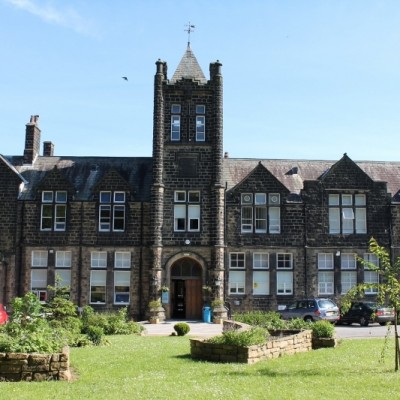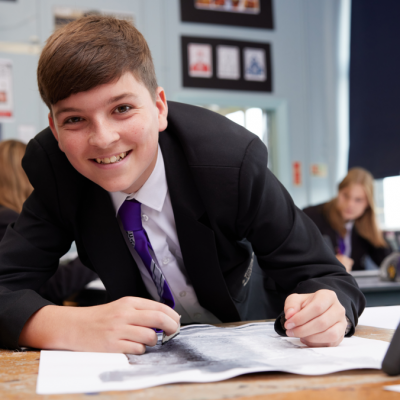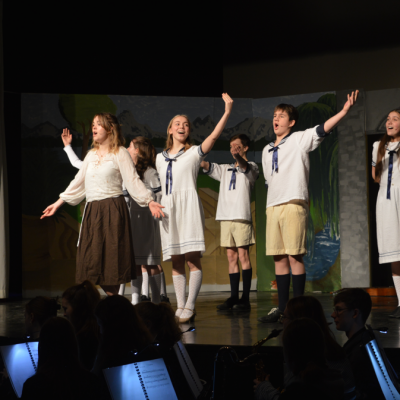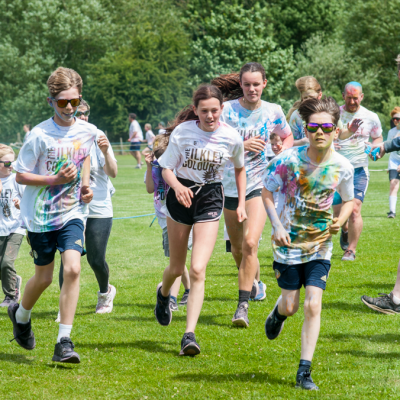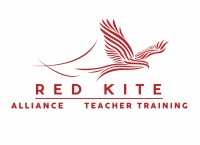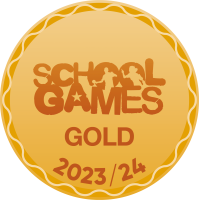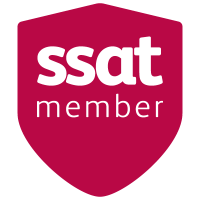BIOLOGY
Year 9
In year 9 the students begin their studies of the biology required for their GCSE sciences.
The year 9 curriculum begins with the theme of what living things are made from and is introduced with the levels of organisation that are used to break down the study of living things into component parts. The idea is to scan downwards to the cells which are the building blocks of living things, giving an idea of scale. Students studied basic cell structure in year 7 and this topic at the start of year 9 enables the review of this material to secure fundamental knowledge that is required throughout their continued study of biology. It builds on this base with the introduction of differences between eukaryotic and prokaryotic cells, and adaptations of specialised cells. These topics can then be regularly recapped in future topics and built upon with other specialised cells. For example, specialised plants cells are studied within the year 10 photosynthesis and plant transport topics, small intestine epithelial cells are studied in year 10 digestion. In year 11 specialised cells are recapped with the study of differentiation of stem cells. This structure of identifying key topics that are required for correct understanding of others and providing opportunities for their recap is a fundamental strategy in our curriculum design. It has the aim of increasing retention knowing and it enables students to see the links between different topics and to bring together different content to provide explanations. It prevents students from isolating facts into specific topics and not seeing synoptic links and interrelationships.
Students are introduced to our higher power optical microscopes and will develop skills in focusing at different powers and producing temporary mounts. This includes producing simple drawings and been able to calculate the magnification of the image using the eye piece and objective lens powers. Students also learn how to calculate magnification, real and image size and look at the greater magnification and resolution possible with electron microscopes. Students can find this challenging and its early introduction in the course and the review and study of different specialised cells in the future allows recap and reinforcement.
To continue the study of what living things are made from students then go down a level and study the biological molecules that makes up living things. Exam board specifications do not have specific units of work on this area but do have coverage integrated into other topics. However, students have difficulty in piecing elements together and often do not understand for example what biomass is composed of and that photosynthesis produces glucose and this glucose can then be used to make other molecules and is therefore the basis of building that biomass. This causes conceptual difficulties with further difficulties arising when students look at the transfer of energy along food changes or decomposition in triple biology courses of study. We therefore have a bespoke unit of work to provide a base for these future topics. This begins with a practical that is designed for the students to find out themselves what living things are made of and which integrates the study of biochemical tests. Students are challenged to complete the tests on grinded up tissue samples from different animals and plants. They find out for example that starch is only found in the parts if plants. Students look at which molecules are large and what the component molecules are and identify the elements in different molecules. This involves spotting the elements that are common and the additional ones that are required for making amino acids and proteins.
Students are often unaware that living things are a sum of the chemical reactions that take place in cells. They may not realise that chemical reactions take place in living things or know examples of reactions. Students are taught what is meant by metabolism and are given examples of metabolic reactions that involve the biological molecules they have studied.
Enzymes is the next topic of study and this has purposefully been removed from being within the digestion topic as it is within the GCSE specification. The aim is to tackle the misconception that enzymes only break down chemicals rather than been the catalysts for all chemical reactions. Students learn about the factors that affect the rate of reactions and are challenged to write about these topics using increased terminology that is used at KS5. Dual coding is used with diagrams that enable students to suggest what happens to the enzymes in different conditions. Studying this topic at an early stage allows us then to recap the work in different contexts throughout the course i.e. within digestion, photosynthesis and decomposition for example.
Respiration is then taught next as an example of a chemical reaction that takes place in all cells. This is done to tackle the confusion that can occur between respiration and breathing where students often think respiration is breathing and only takes place in the lungs. It looks at what the energy released is used for and this links back to other chemical reactions should as the synthesis reactions required for i.e. protein production and therefore growth. Building these links is an important aspect of the curriculum design.
Respiration requires oxygen so next students study how living things obtain this oxygen from their environment. This covers diffusion and the understanding of surface area to volume ratio. This enables students to look at why single celled organisms are able to obtain oxygen over their cell surface whereas larger organisms require specialised gas exchange surfaces. The students study different exchange surfaces and link the efficiency of the process to the factors that affect the rate of diffusion. The knowledge of the factors that increase rate enable them to suggest explanations for the features they see in unfamiliar organisms. Solute exchange surfaces are studied at the end of digestion so that the key features of exchange surfaces can be reinforced and applied in different contexts.
The gas exchange surface is positioned in one area of the organism. Oxygen needs to be transported from here to all cells as respiration takes place in all cells. This is often over long distances, so diffusion alone is not quick enough, and it doesn’t move large enough amounts to meet the respiration requirements. Therefore, students next study the circulatory system and how oxygen and other substances such as carbon dioxide, lactic acid and glucose are transported between cells and the gas exchange surface. The heart disease topics are not taught in year 9, instead it is delivered within a non-communicable disease theme in year 11. This gives spacing and enables revision of the circulatory system prior to this topic and reinforcement of its content.
The final topic of the year is response to exercise. This topic enables students to look at the links between respiration, breathing and heart rate. It requires the students to look at the need to increase the rate of respiration and how the muscle cells can be provided with increased levels of oxygen and glucose to enable this increased rate, and also how the increased levels of carbon dioxide can be removed and how the body deals with the production of lactic acid from anaerobic respiration. Students are challenged with extended writing to explain the links and explaining the trends they identify in data. It is a topic that brings together the prior topics of the year.
Year 10
Students start the year off with video footage of a hyena beginning to eat a dead elephant……and are surprised to see the hyena start this process by placing its head inside the elephant’s anus! Students are questioned on what molecules the elephant is made from reinforcing that living things are made from biological molecules and introducing that digestion is the break-down of the large, insoluble molecules to obtain the small, soluble molecules that living things require to build their component parts. Contexts are chosen throughout our teaching to capture the students’ interest and motivate at key points. The video makes for a dramatic start to the year. The choice of context also fits for those students who study the triple course with their next topic being decomposition (a form of digestion). The digestion topic also allows students to apply their year 9 knowledge of enzymes and the factors that affect their rate of reaction i.e. with changes in pH along the system. The topic integrates practical work with students finding out first-hand the pH of different fluids in the digestive system. We have designed our own practical that gives the students these fluids and allows them to find out the role of bile. It requires the students to think and work things out which is an element that we want throughout the course. A final extended writing challenge is set for students to describe the digestion of the elephant material by the hyena’s digestive system so that students bring all their new knowledge together. Scaffolding is provided to support literacy development where needed. In addition, students review specialised cells with the study of small intestine epithelial cells and features of exchange surface with study of the small intestine as the site of solute exchange.
Absorption of the products of digestion and of water from the large intestine leads into the study of osmosis with staff able to select contexts such as cholera for its study. Higher ability students are taught the topic with the same terminology as at A level to prevent the issues that can occur with students using incorrect GCSE levels of explanations at advanced level. It also provides a stepping stone for higher level work and prevents student’s feeling like there is a big gap between GCSE and A Level. We find the students enjoy being challenged at this level. They practice application work explaining why saline is required in a drip to treat dehydration and not water for example.
Students are then introduced to the third method of transport across membranes, active transport. Introduction work allows students to compare this process to diffusion, recapping year 9 work. Students complete application work on turtles. They are introduced to these as a species that are at risk of extinction from the activities of humans with staff using material such as this to raise some of the key issues that biologist’s study and are key concerns for today’s society. The work integrates data analysis and requires the students to bring together work from transport across membranes, enzymes and respiration. This provides a key opportunity for students to experience the inter-relationships between topics and how having knowledge in different areas and understanding the links enables them to make suggested explanations.
Following the first assessment of the year (which includes topics from year 9) students begin their study of plants. Staff traditionally study this with review of plant cell structures and sequencing that looks at how plants obtain the substances they require for the key process of photosynthesis. This entails looking at uptake of water by the roots, study of the xylem and stomata. It incorporates practical investigation using potometers and mathematical work calculating the density of stomata. It also requires application to look at xerophytes to see if students can identify and explain adaptations to desert environments. Key component topics such as specialised cells, osmosis and active transport allow students to be able to explain how the stomata can close for example, and knowledge of factors that affect the rate of diffusion enable suggestions about xerophytes to be made. This work leads into the study of photosynthesis and the rates which affect it. This is related to everyday life by looking at greenhouses and horticulture in terms of how they use knowledge of these factors to maximise yield. Students also look at the environmental impact of decisions that are made i.e. should we be growing tomatoes in Iceland? Or by making choices themselves about conditions for their own greenhouse that may involve making compromises.
Plant work is completed by looking at plant reproduction and pollination. This is used to enable students to look further at the interdependence we have on plants and to look at the key issue of the potential loss of our pollinator species.
We then switch back to human biology to give students a change and to space out work for future review. Students study the nervous system, looking at its role in survival and coordination. They look at how reflex actions prevent harm to the body and at events in synaptic transmission. They are presented with the scenario that women have not always been able to train as fighter pilots with the assumption that they have slower reaction times. Students can then look at designing an investigation that samples students in the class to provide evidence to contradict this statement.
Study of communication and co-ordination continues with a first section of work on the endocrine system. We look at general roles of hormones and the role of negative feedback in achieving homeostasis. Work on adrenaline allows us to review how increases in heart rate and breathing rate allow greater muscle contraction (from year9) and thyroxine links to work on metabolic rate. The timing of this material assists with review for the year 10 mock exams.
Following the exams, we look at blood glucose level control and the rising issue of type 2 diabetes with students looking at the correlation between obesity levels and this condition and in turn the rising costs to individuals and society. We challenge students to suggest explanations for the symptoms of diabetes using the biological knowledge they have gained from other areas.
The final unit of work for the year is ecology. This involves fieldwork so is timed for ideal weather conditions so that we carry out techniques in practice and not just in theory. Students look at sampling techniques and how to estimate the population of daisies in a field as well as carrying out an investigation using a transect to look at how light levels affect the distribution of a species.
Year 11
Students enjoy study of the reproduction system and we begin the year with a second unit of work on the endocrine system but this time with a focus on the reproductive hormones. They learn about the control of the menstrual cycle and how hormones allow the coordination of the development of an egg at the same time as the development of the uterus lining. The topic looks at how we can use this knowledge of the hormones to reduce or increase the chances of pregnancy. They study the various contraceptive methods and make reasoned decisions about which contraceptive to recommend to different individuals based on their circumstances. IVF has become more common and students learn the main steps in the process and consider the financial and emotional implications of the technique. They also look at the use of fertility drugs and consider the dangers of multiple births and both the short-term risks and the low birth wait as a risk factor for future conditions.
This leads into study of correlations and understanding that correlations do not prove causation as may be implied by headlines in the news. Students look at smoking and birth weight and use their biological knowledge of respiration, circulation and growth to explain how chemicals such as carbon dioxide are determined as a cause.
We move on to look at how the cells of an embryo would divide to provide growth studying the events in the cell cycle and the details of mitosis. Background work is done on DNA, chromosomes and genes to enable greater understanding of the events that take place. They then look at what happens when cells divide out of control and what the risk factors are for cancer. We look at the concept of genes switching on and off for differentiation to occur and at what stem cells are, what their potential uses are and potential problems such as cancer occurring. They evaluate their use looking at ethical considerations alongside their possibility in treating conditions such as paralysis.
Students then look at another non-communicable disease with the study of heart disease. They review their knowledge of the heart and look at how the formation of fatty deposits in arteries can lead to heart attacks. Cardiovascular disease is one of the greatest killers in the world and understanding of the risk factors can enable the students to consider how they could prevent the condition. They also look at the possible treatments and evaluate them using research on the NHS website. This enables informed choices or understanding of procedures that they may personally encounter. They also continue evaluation work looking at valve replacement and artificial hearts considering the issue of a shortage of donors.
We then return to cell division with a look at meiosis and how this halves the number of chromosomes and enables variation through sexual reproduction. We space this away from mitosis as we find that if they are studied together that students mix up the process. We can follow work with comparison work to review the early study of cell division. The meiosis work links into the study of inherited diseases. As its gives understanding that one copy of a gene is received from each parent.
Following mock exams students study communicable diseases looking at both human and plant diseases. Students look at a series of diseases and we have for example designed a scenario based around an individual contracting gonorrhoea as result of a partners’ infidelity. Students move through a series of tasks in envelopes with a story gradually unfolding with links to treatments with antibiotics and the rising issue, that was documented in Leeds, of antibiotic resistant gonorrhoea. Students enjoy studying topics in these real life context with thoughts for the individuals involved and it allows us tackle misconceptions about who are at risk of contracting certain diseases.
We then study the immune system and how it fights disease and how we can use this knowledge to vaccinate and provide protection against diseases such as measles. Study of such diseases allows the students to look at the dangers of diseases that are now often not seen and therefore may not create the same fear as in the past and may lead to people not choosing vaccinations. The herd effect is covered, and data is used to look at some of the vaccine debates.
We look at the treatment of diseases using different drug types and look at how we could study chemicals produced by a Komodo dragon to see if they could provide solutions to the shortage of new antibiotics. This enables the students to look at how drug development occurs through a series of testing and trials and the use of placebos.
The development of antibiotic resistance is an example of natural selection, so we lead from here into the study of adaptations and the theory of evolution. Students study the different theories and look at why they caused controversy and the evidence that may support or disprove them. We teach the basics of speciation to enable the students to understand how new species develop and how knowledge of this evolution is used in the classification system.
We then look at artificial selection and at how humans can add genes into different organisms to give additional features to say for example produce plants that can resist drought or bacteria that can produce insulin. Concerns about the use of these techniques are discussed and linked to issues such as the lack of variation and the benefit of seed banks.
Our final unit of work is on ecosystems and the impact of humans. Conceptually this topic is not difficult, so we place this at the end of the year. Students cover very similar material in geography and chemistry so often have a strong background knowledge. The end of the year is a stressful time for the students in the lead up to exams, so we selected this topic for that time. It is also highly relevant to the students and current climate change issues with students taking part in the climate strikes. They are keen to look at the impact and we take care to ensure that we include topics that may be less familiar such as effects on bird hatching times and migration patterns.
Our overall aim is that our students leave the end of the course with a life-long love for biology, the knowledge and skills to continue their studies in the field if they wish, and importantly the knowledge they need to understand real life events they will experience and to make informed decisions and evaluations that benefit themselves and wider society.
